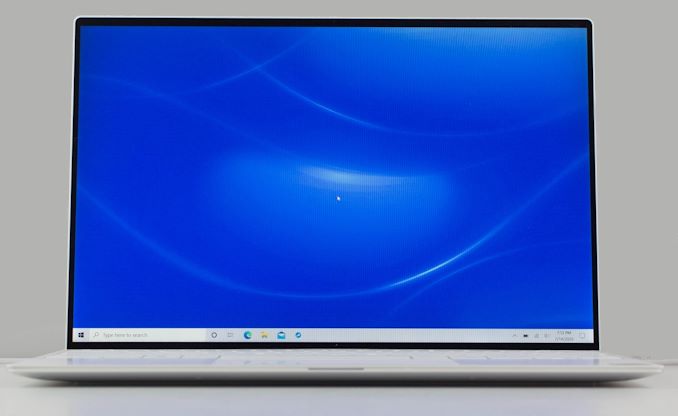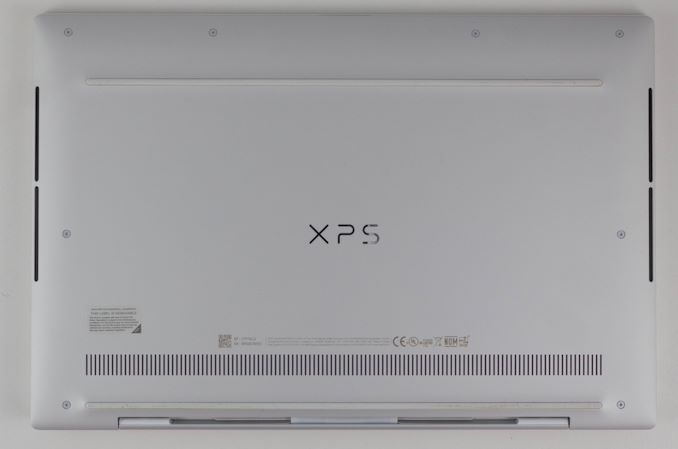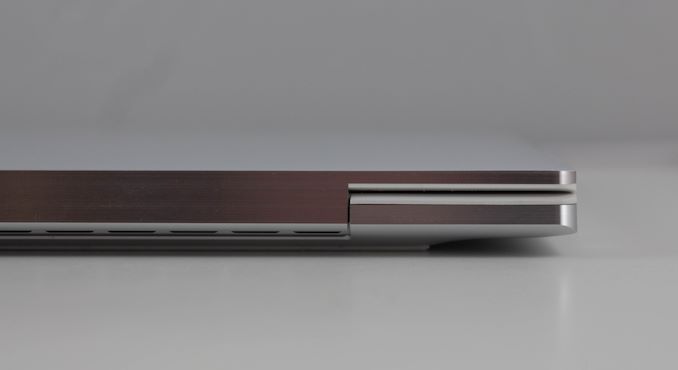The Dell XPS 13 (9300) Review: Return of the King
by Brett Howse on July 16, 2020 10:00 AM ESTFinal Words
Dell’s XPS lineup is one of the strongest in the PC industry. The InfinityEdge display was a revolution, allowing laptop sizes to shrink considerably, while providing the same display size. The new XPS 13 improves on an already excellent pedigree by moving to a 16:10 aspect ratio on the display which further reduces the bezel and keeps the new XPS 13 looking as fresh as ever.
The two color choices are both great, but the Arctic White, with its woven fiber keyboard deck, is really striking. Dell has tweaked this slightly from their original 2-in-1 design by moving back to black display borders, which can help hide the admittedly small bezels even further. The older soft-touch carbon fiber black color is still a great look as well. The refreshed XPS 13 is simply one of the nicest looking notebooks in its class.
The move to Ice Lake in the 2020 refresh is also a welcome addition, mostly thanks to the significantly improved integrated GPU performance, but also because it allows the laptop to support 32 GB of RAM. Coupled with the maximum 2 TB of SSD storage, and the XPS 13 offers plenty of performance for its size. There will be those that lament the lack of an AMD option, as AMD’s latest Renoir is a very potent platform, but the lead time on a notebook like this would preclude that option.
Dell’s decision to move to a 16:10 aspect ratio means that you get a bit more vertical space, which should be beneficial in most productivity scenarios. Of the two display options, unless the wider P3 gamut support of the 3840x2400 display is something critical for a specific workflow, the extended battery life of the 1920x1200 is likely the better option for most people. And, just so it is not forgotten, Dell’s anti-glare coatings are a shot in the arm for the PC industry, providing just 0.65% reflectivity, and when coupled with the very bright display, makes for a winner in almost any lighting condition.
Even the bottom of the XPS is well thought out. Torx screws surround the bottom which allow access inside if needed, and Dell continues to utilize rubber feet which span almost the entire width of the notebook, providing an incredibly solid footprint across a range of surfaces.
Open or closed, the XPS 13 is a fantastic looking device. It backs that up with excellent performance, and plenty of options to fit almost any budget. It is somewhat rare for a premium notebook to start at under $1000 USD, but Dell manages that, if only barely, but the base model now provides 8 GB of RAM and 256 GB of storage, which is much better than some of the XPS 13’s of old, which started with half that RAM and storage for the same price. Dells options are also very reasonable priced, so upgrading from the base model does not instantly launch the price into the stratosphere.
It is great to see Dell update their XPS 13 clamshell notebook to the same internals and design of their previously released 2-in-1 version. It is also great that you can opt for either the clamshell XPS 13, or the convertible 2-in-1, depending on your needs. The convertible offers some increased functionality that you cannot get in a traditional notebook, but there is also a large market that prefers the simplicity of the traditional design. With the XPS lineup, it is your choice.
Finally, in a very rare move, Dell offers not only Windows, but also Linux, giving buyers their choice on what operating system they get. It goes without saying that this is an incredibly uncommon thing on a premium notebook, and very welcome to see. In the case a buyer does opt for Linux, then the the XPS 13 Developer Edition, as it's called, comes from the factory with Ubuntu 18.04LTS.
Overall there is a lot to like about the new XPS 13, and very little to detract from. Dell has yet another winner. With an updated 16:10 display, class-leading battery life, and a fantastic design, the XPS 13 is easily one of the best notebooks around.














224 Comments
View All Comments
Korguz - Friday, July 17, 2020 - link
Santoval, look who made the comment, there is no need to say anything else. its self explainitory.Santoval - Friday, July 17, 2020 - link
Is it? I have no idea who "Deicidium" is, sorry..Korguz - Friday, July 17, 2020 - link
then you haven't been reading here that much. he will bash and any chance he can, while praising his gods intel and nvidia, with no proof at all of his claims.Korguz - Friday, July 17, 2020 - link
bash amd any chance he canDeicidium369 - Friday, July 17, 2020 - link
I got you mixed up with Spungy, have no clue who you are either.Deicidium369 - Friday, July 17, 2020 - link
Run along little boy.Deicidium369 - Friday, July 17, 2020 - link
Zen 1 vs Zen 3 are minor architectural tweaks and improved manufacturing and packaging ("chiplets" and IO die) - per core performance has not increased any more than Skylake to to Coffee Lake to Comet Lake. Minor tweaks. So still competing at Skylake level perormance.Well moved on - Last 14nm server CPU has shipped - last 14nm desktop CPU is shipping later this year. Ice Lake is widespread enough to count - in way more designs than AMD.
Leaks show that 8C monstrosity to be 17% better perf than 4 cores on Tiger Lake.
Rocket Lake is basically backported Ice Lake/Tiger Lake to 14nm - so no Skylake there. Sunny Cove/Willow Cove/Golden Cove ARE NOT SKYLAKE. New arch. I know you know this.
Korguz - Friday, July 17, 2020 - link
going by that same logic, all intel cpu's since skylake are also minor architectural tweaks and improved manufacturing as well, whats your point ?" Last 14nm server CPU has shipped - last 14nm desktop CPU is shipping later this year" oh ? lets see you post proof of this. oh wait, you cant, cause there isnt any proof.
" Leaks show that 8C monstrosity to be 17% better perf than 4 cores on Tiger Lake. " like another mentioned, still cherry picking are you ?
IF it was a new architecture, intel them selves would of called it gen 1, not gen 10/11/12/etc.
schujj07 - Saturday, July 18, 2020 - link
Per core performance hasn't increased from Zen 1 to Zen+, to Zen 2??? Whatever you are smoking I hope you share. Clock for clock Zen 2 is about 18% faster than Zen 1, that means per core performance is higher. Whereas Intel hasn't increased per core performance since 2015. Before that Intel hadn't had more than minor changes since the change from Nehlema to Sandy Bridge. After that they had nothing more that 5% IPC improvements, all other performance increase was sheer clock speed.Odds are that Rocket Lake will not clock as high as Skylake derivatives. It will need to have a massively higher IPC to counteract the loss of clock compared to Comet Lake. On top of that it will probably be very power hungry due to the bigger chip and added complexity.
gescom - Friday, July 17, 2020 - link
Similar single performance at much lower power consumption.https://www.notebookcheck.net/Lenovo-ThinkPad-T14s...